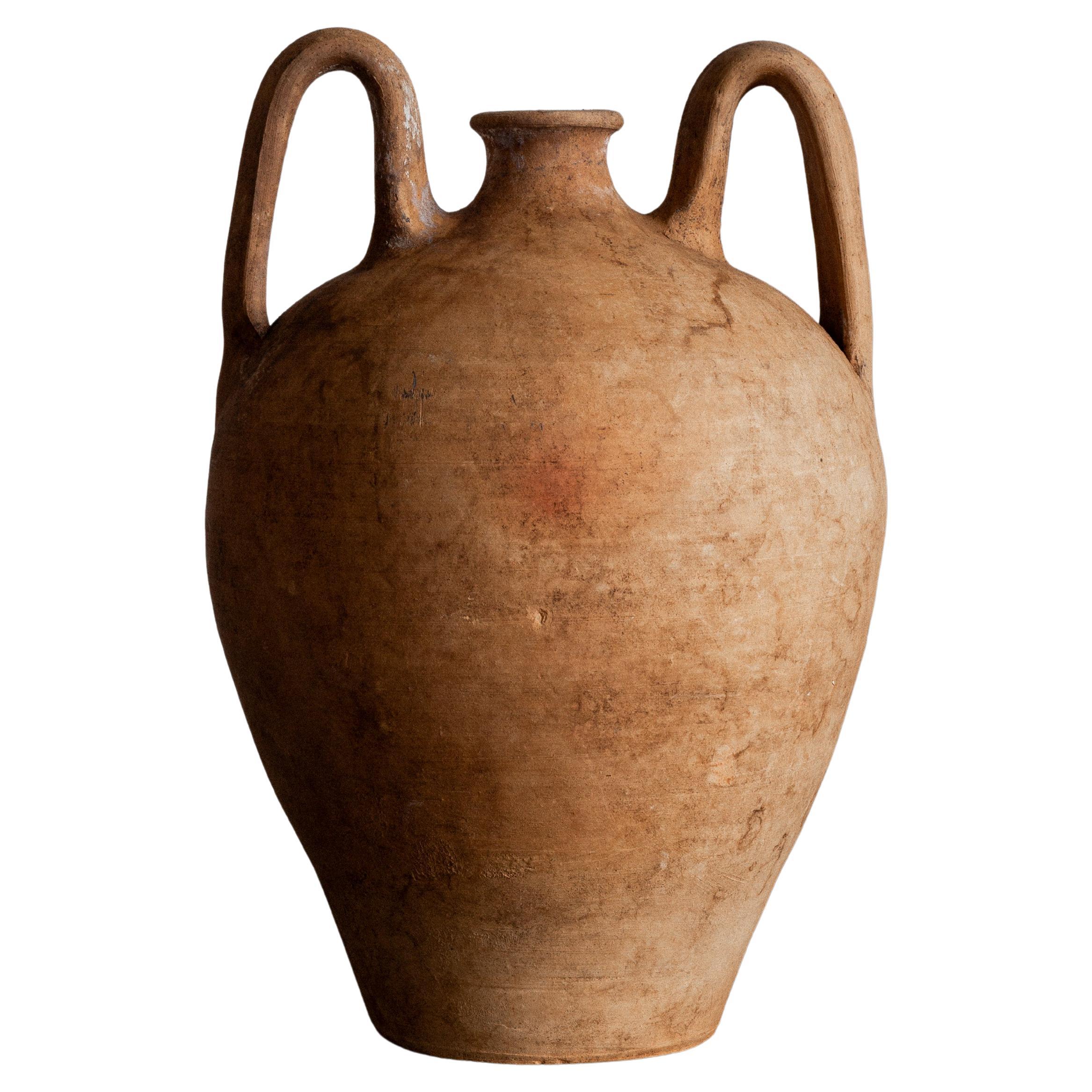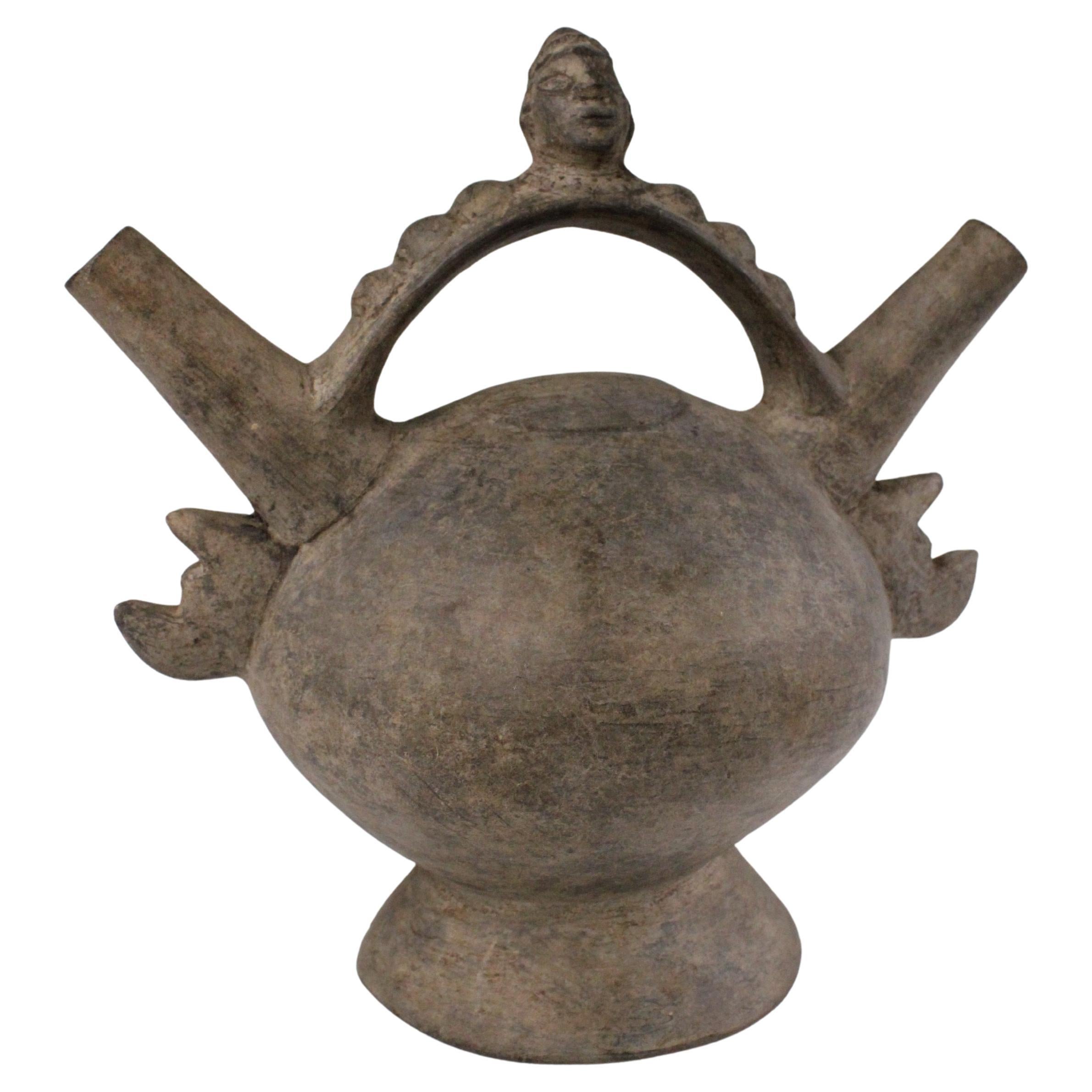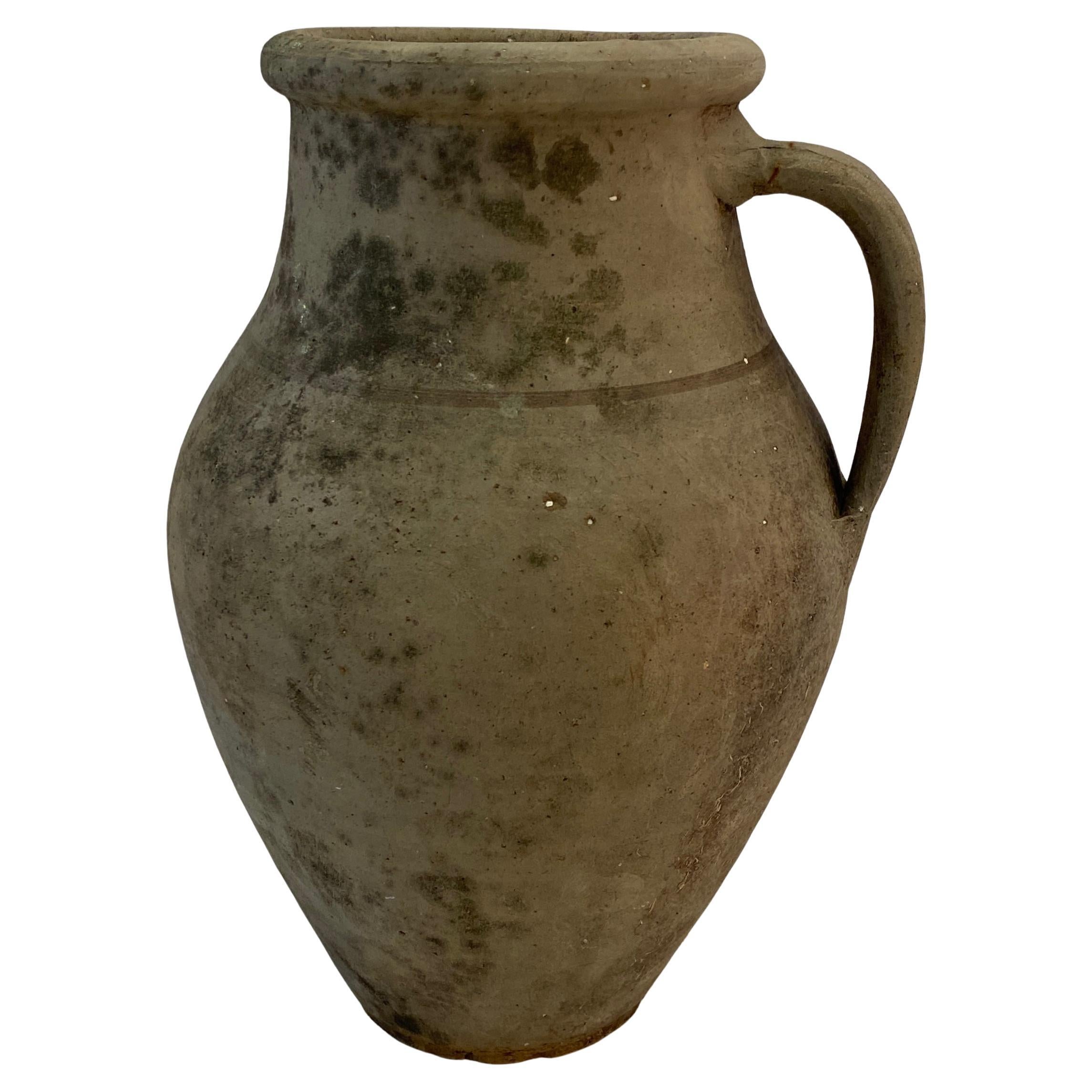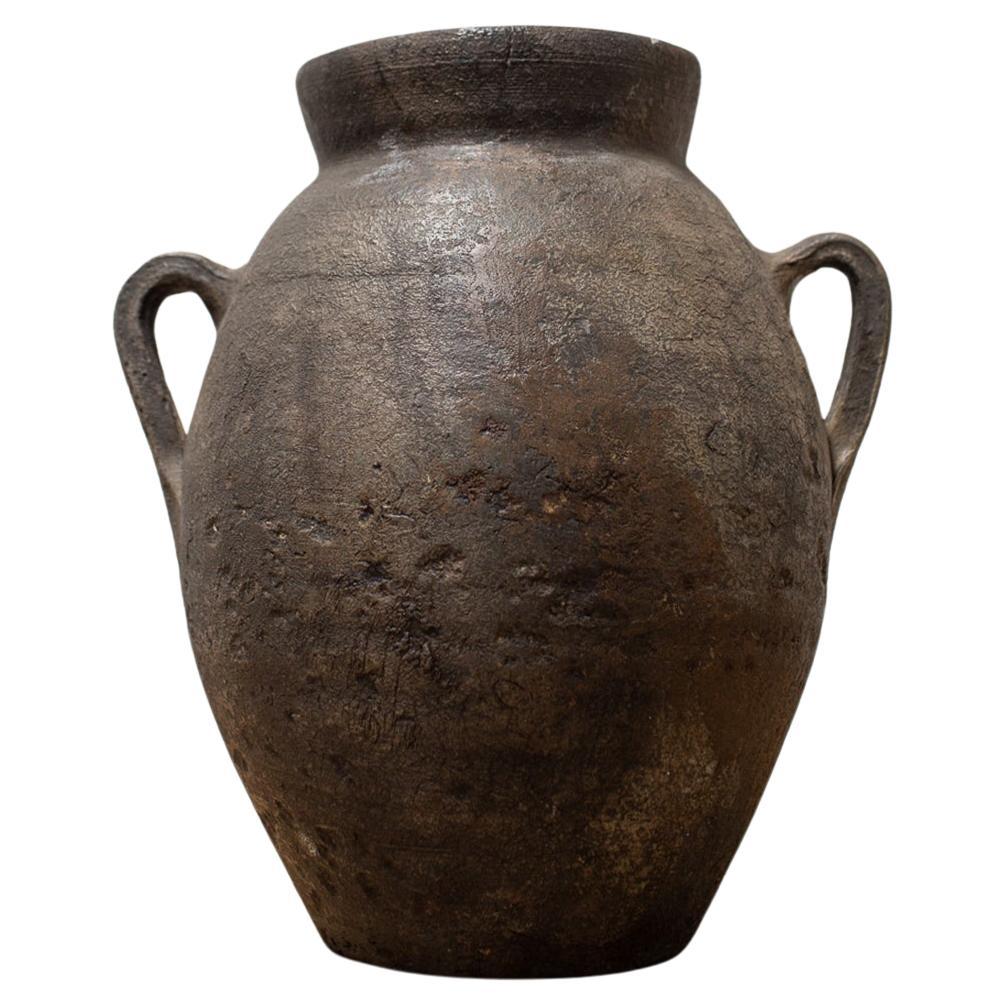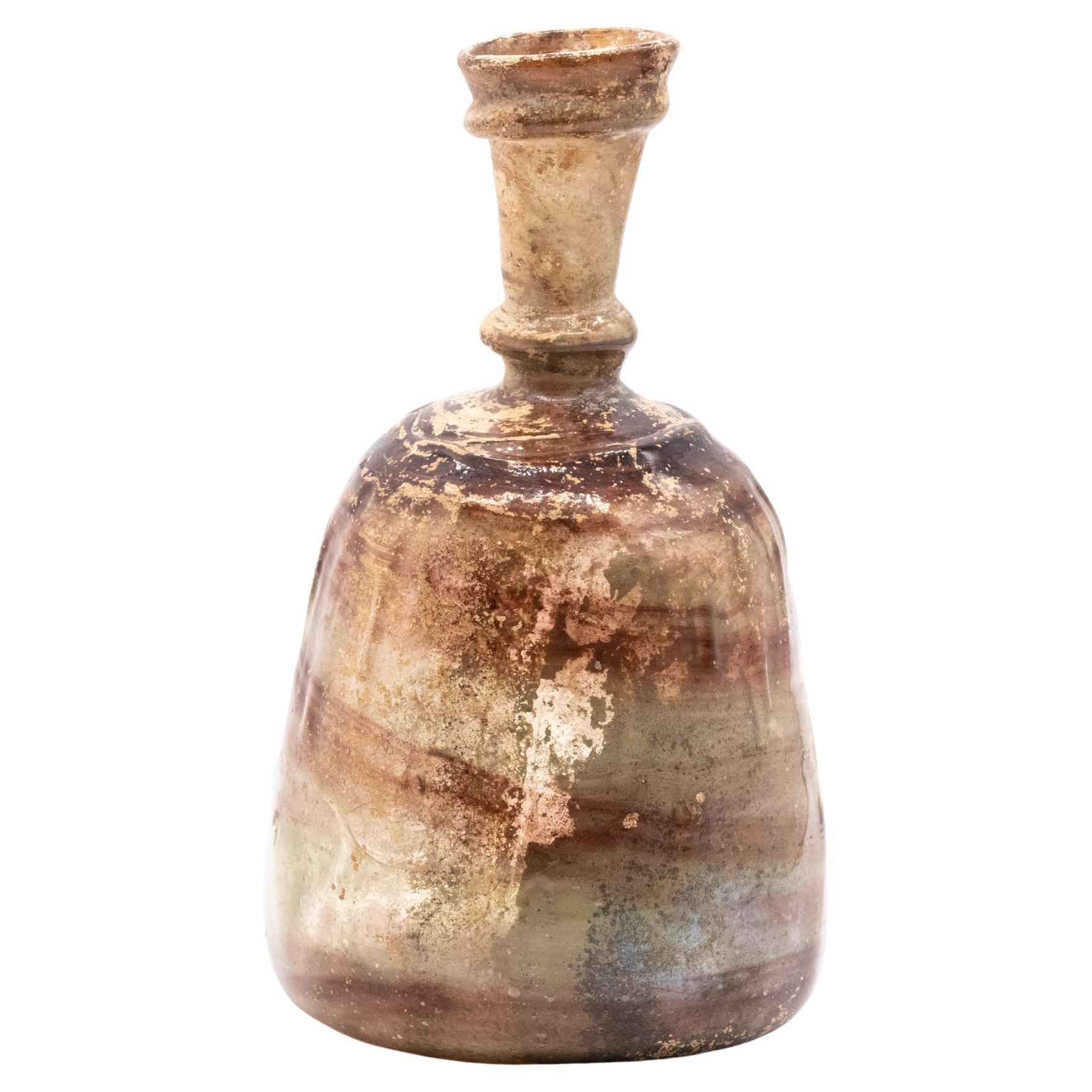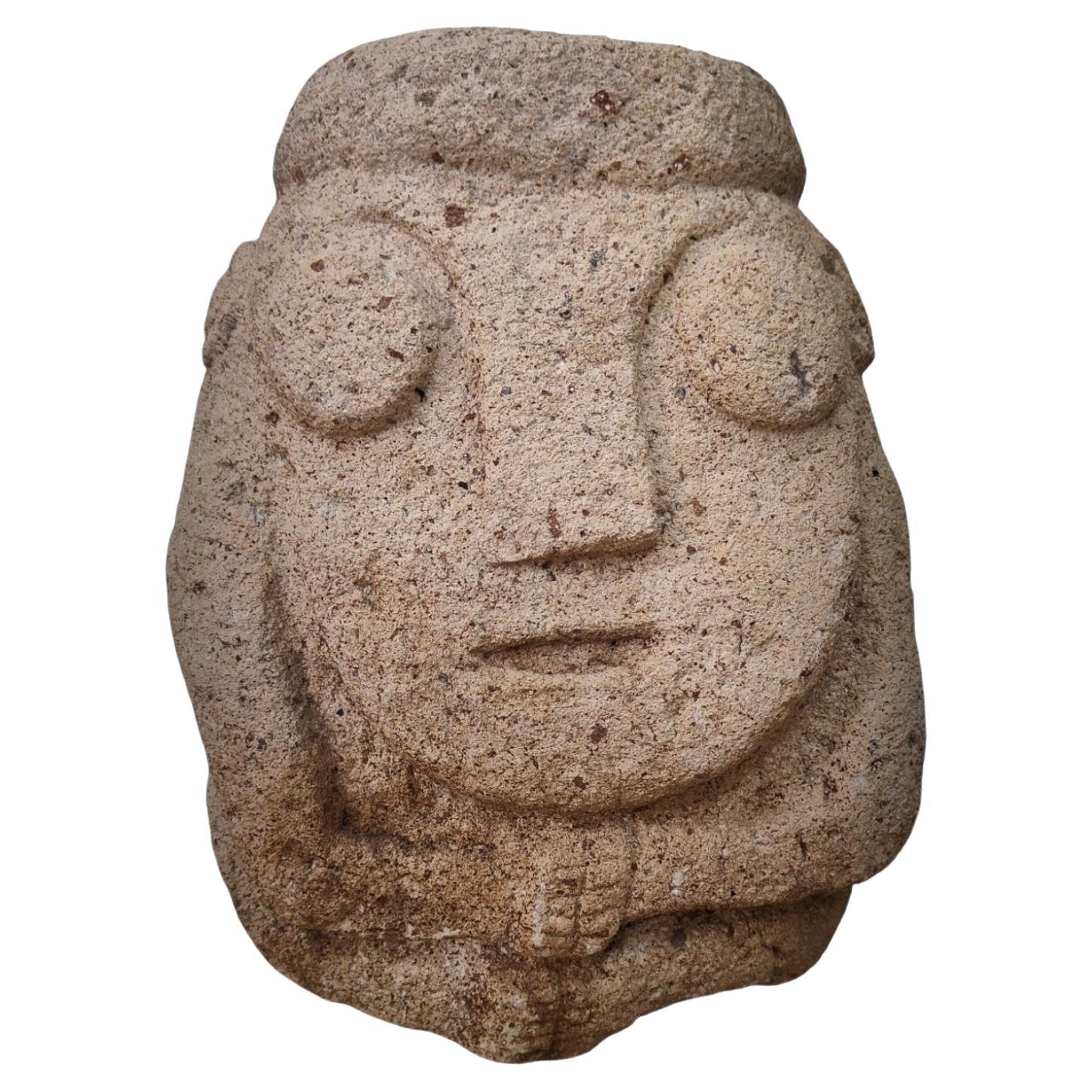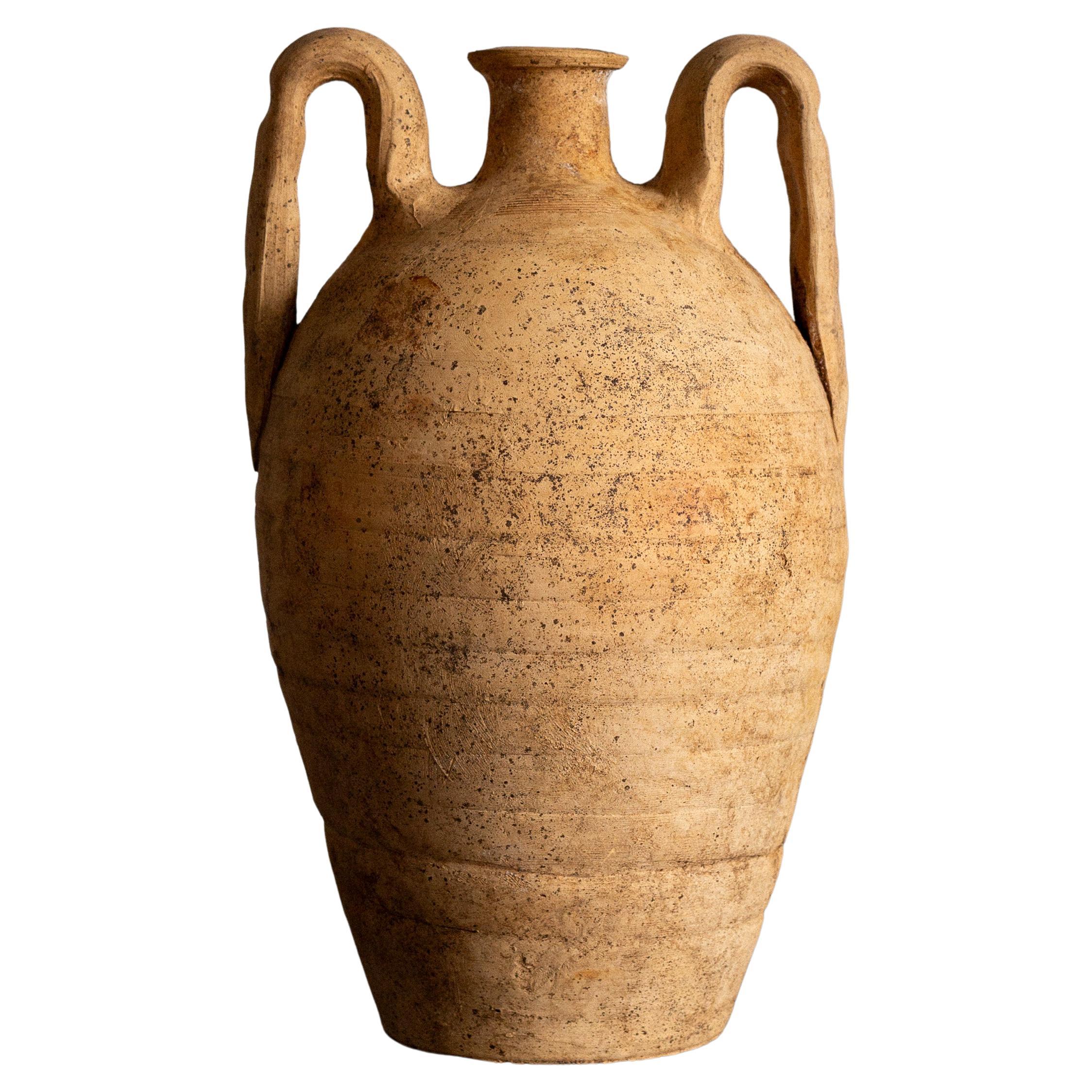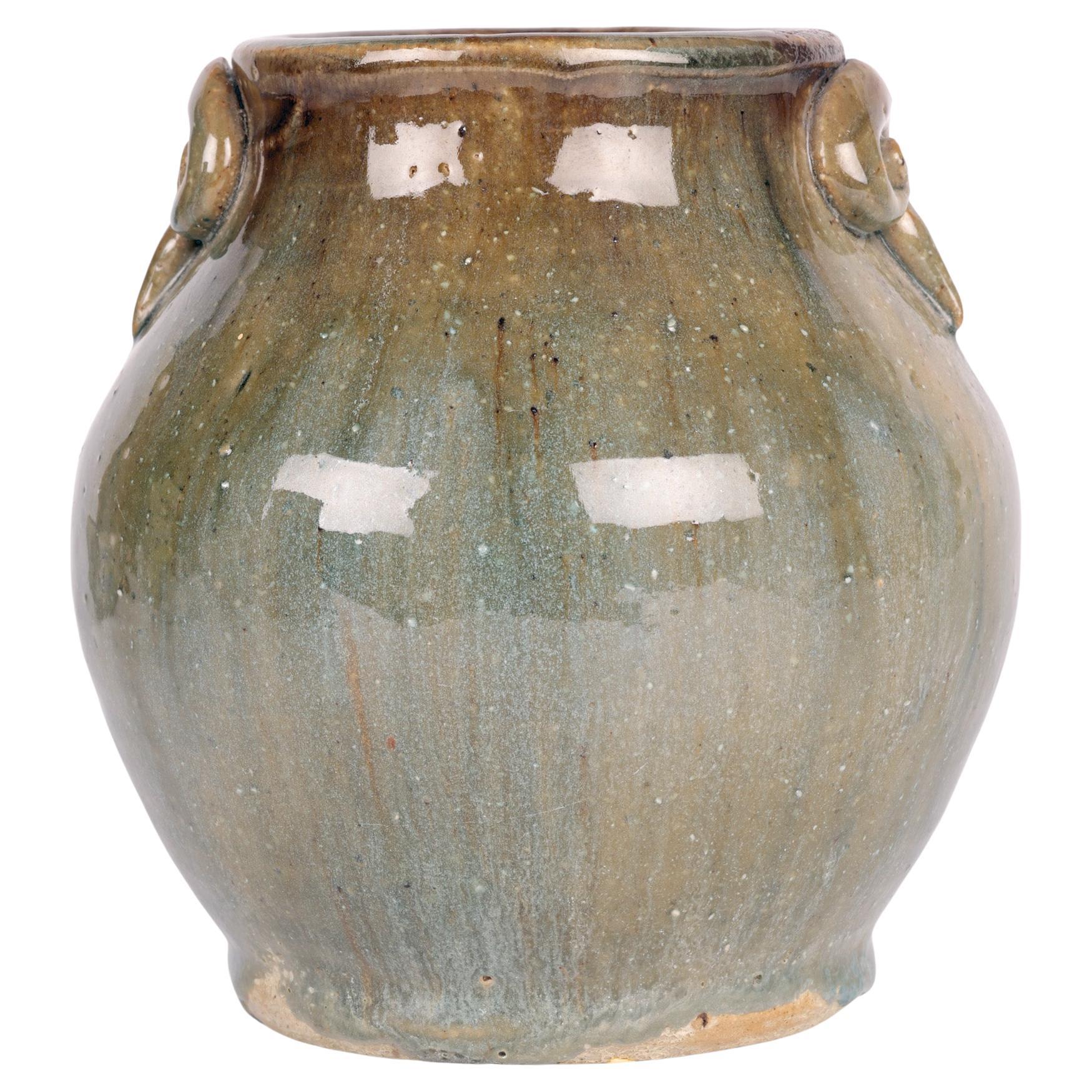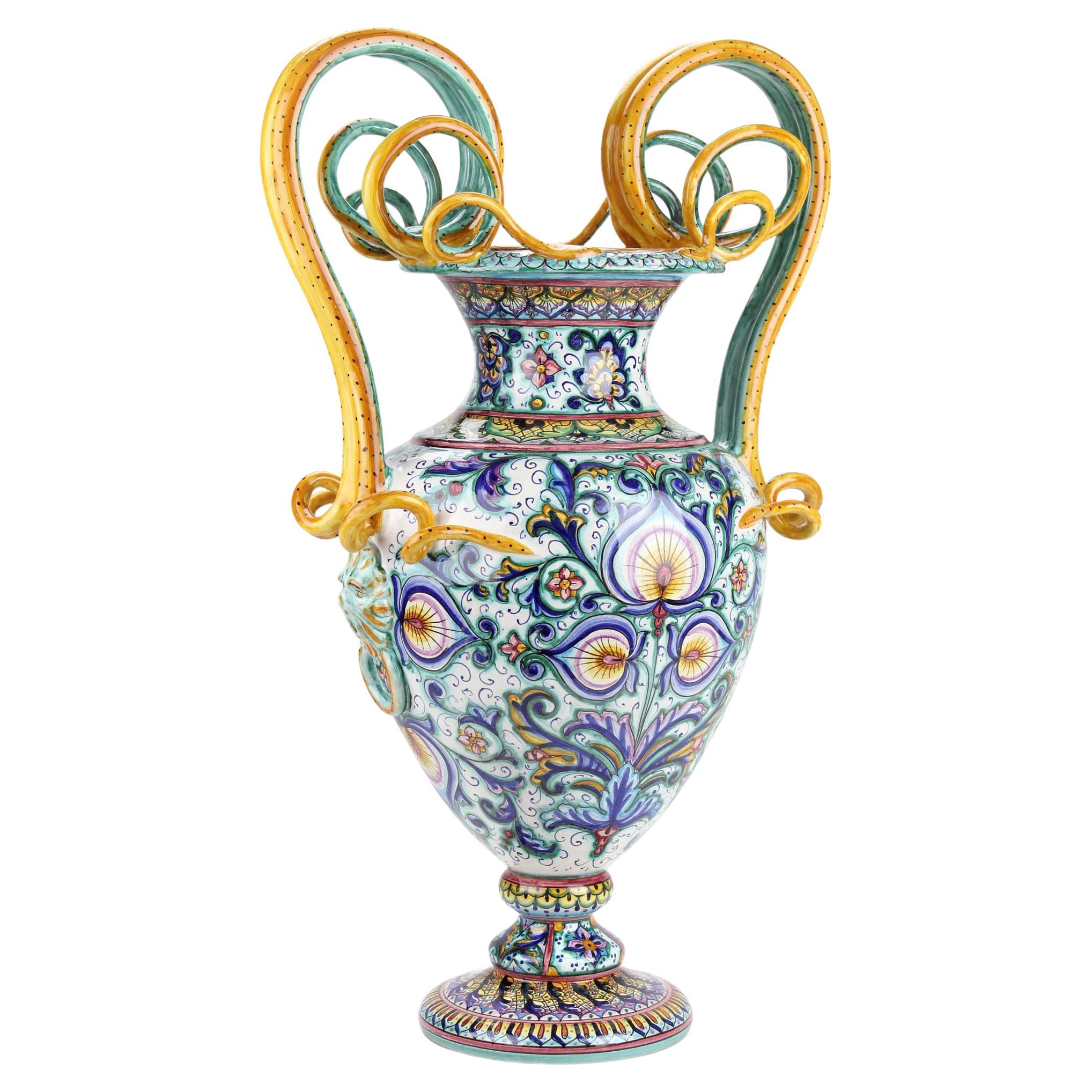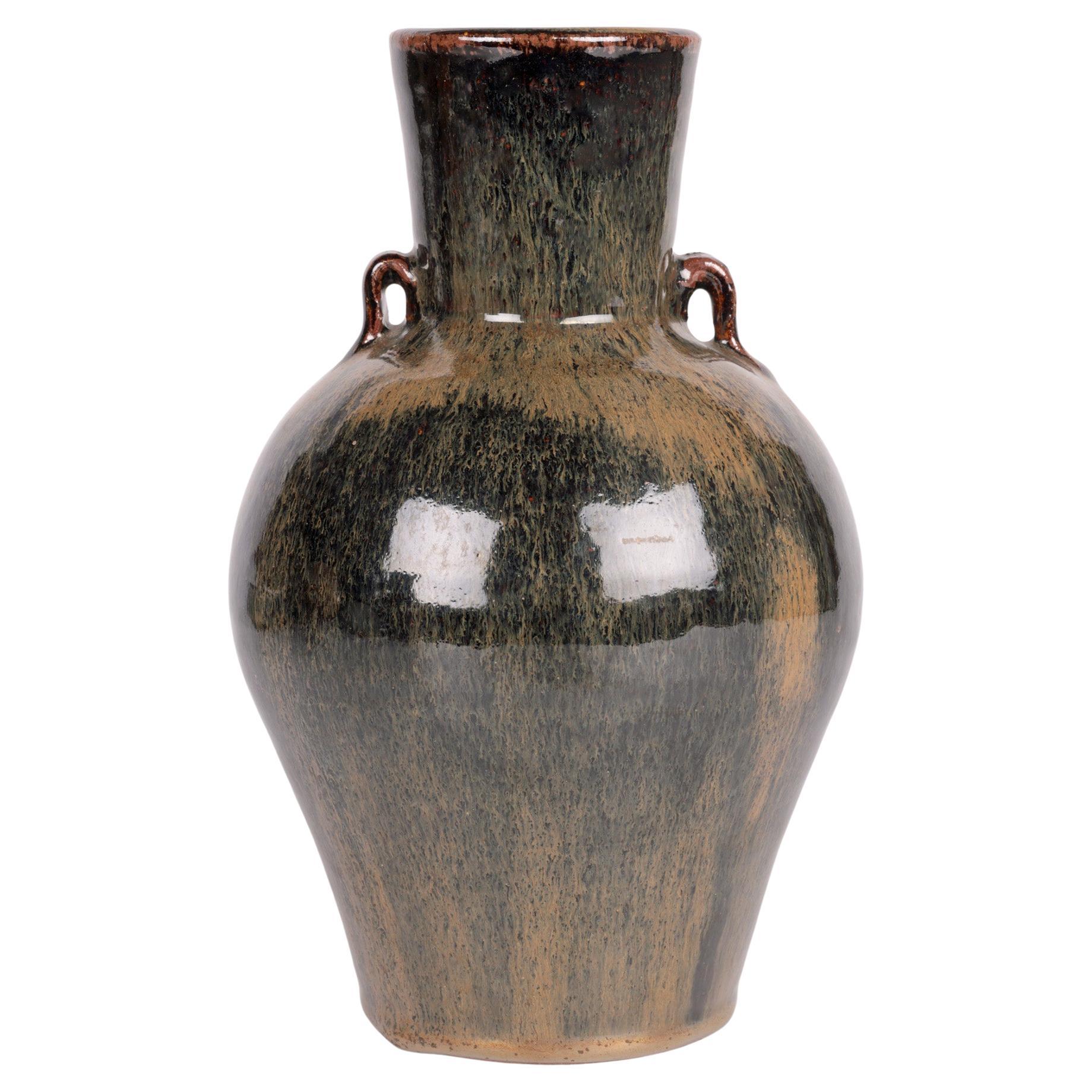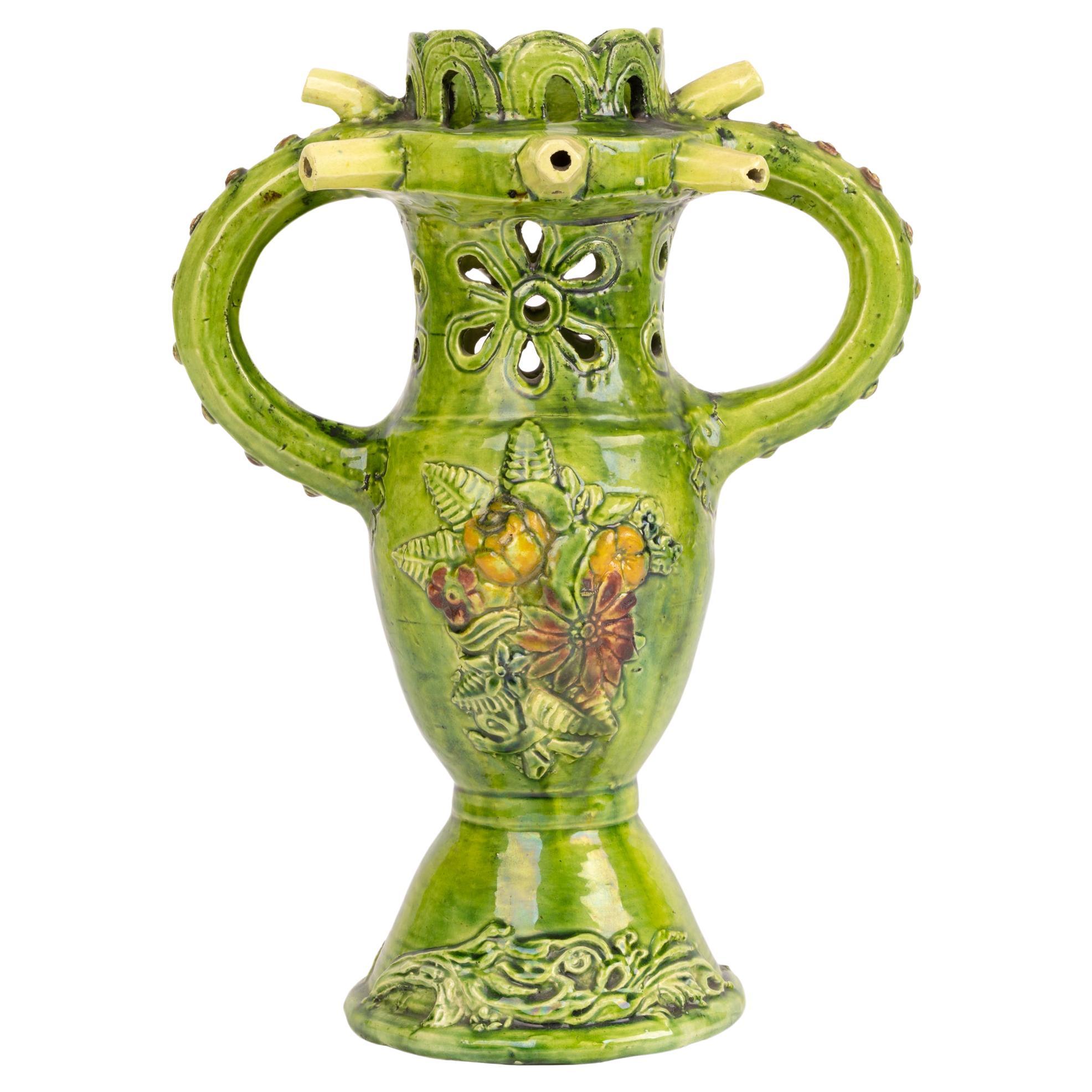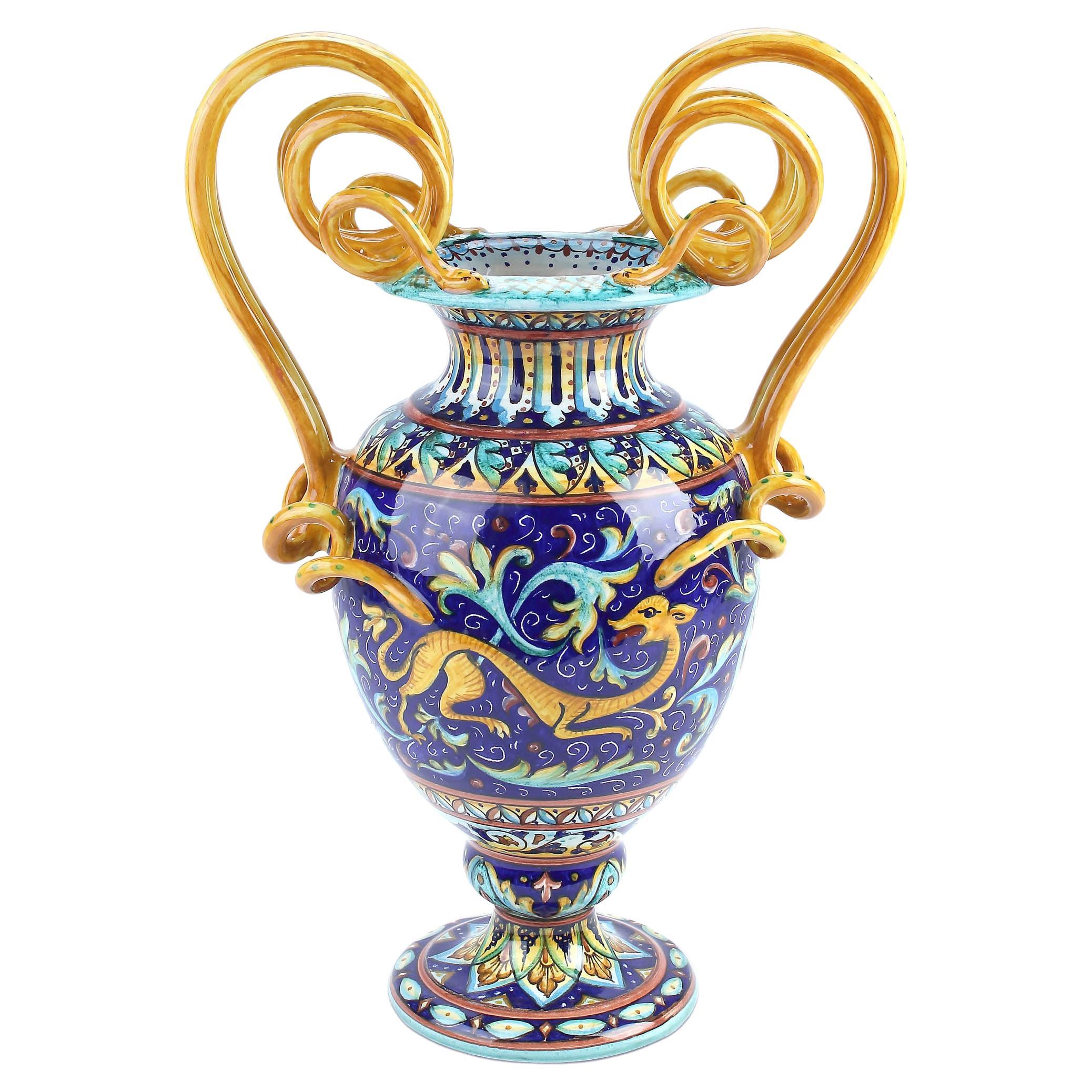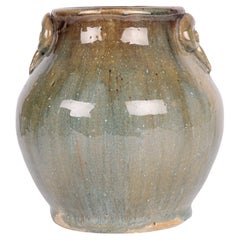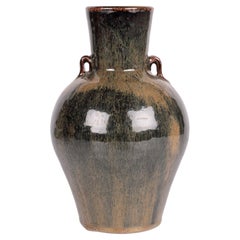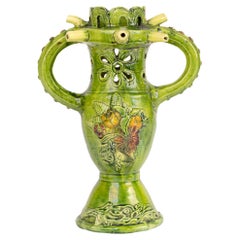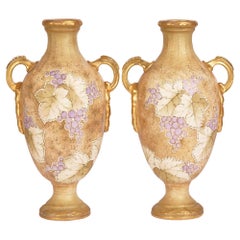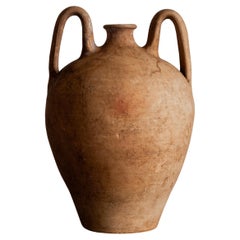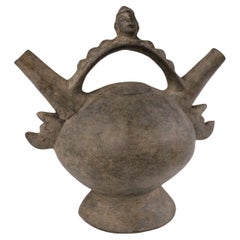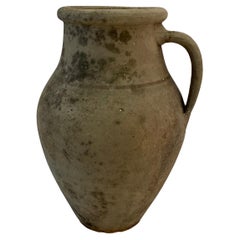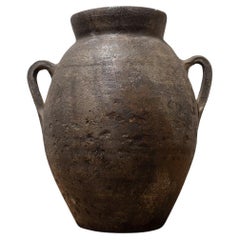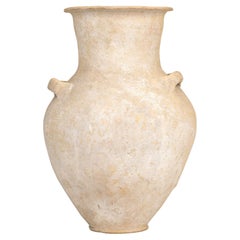
Roman Ancient Pottery Amphora Twin Handled Vessel 400BC
View Similar Items
Want more images or videos?
Request additional images or videos from the seller
1 of 21
Roman Ancient Pottery Amphora Twin Handled Vessel 400BC
Price:$2,191.69per item
About the Item
- Dimensions:Height: 9.06 in (23 cm)Diameter: 6.11 in (15.5 cm)
- Style:Classical Roman (Of the Period)
- Materials and Techniques:
- Place of Origin:
- Period:
- Date of Manufacture:Circa 400BC
- Condition:Wear consistent with age and use.
- Seller Location:Bishop's Stortford, GB
- Reference Number:Seller: CE250241stDibs: LU1328244090842
About the Seller
5.0
Gold Seller
Premium sellers maintaining a 4.3+ rating and 24-hour response times
Established in 2009
1stDibs seller since 2015
1,380 sales on 1stDibs
Typical response time: 1 hour
Associations
LAPADA - The Association of Arts & Antiques DealersInternational Confederation of Art and Antique Dealers' Associations
Authenticity Guarantee
In the unlikely event there’s an issue with an item’s authenticity, contact us within 1 year for a full refund. DetailsMoney-Back Guarantee
If your item is not as described, is damaged in transit, or does not arrive, contact us within 7 days for a full refund. Details24-Hour Cancellation
You have a 24-hour grace period in which to reconsider your purchase, with no questions asked.Vetted Professional Sellers
Our world-class sellers must adhere to strict standards for service and quality, maintaining the integrity of our listings.Price-Match Guarantee
If you find that a seller listed the same item for a lower price elsewhere, we’ll match it.Trusted Global Delivery
Our best-in-class carrier network provides specialized shipping options worldwide, including custom delivery.More From This Seller
View AllDenise Wren Oxshott Pottery Studio Pottery Twin Handled Vase
Located in Bishop's Stortford, Hertfordshire
A stylish and unusual Oxshott Pottery studio pottery twin handled vase by highly renowned potter Denise Wren (Australian, 1891-1979) and probably dating fr...
Category
Vintage 1950s English Mid-Century Modern Vases
Materials
Ceramic
Trevor Corser Leach Pottery Studio Pottery Twin Handled Haresfur Glazed Vase
By Trevor Corser
Located in Bishop's Stortford, Hertfordshire
A stylish Leach Pottery, St Ives hand thrown twin handled studio pottery vase decorated in haresfur effect glazes by renowned potter Trevor Corser (British, 1938-2015) and dating fro...
Category
Vintage 1970s English Modern Vases
Materials
Pottery
Edward Bingham Rare Castle Hedingham Pottery Twin Handled Pottery Puzzle Jug
Located in Bishop's Stortford, Hertfordshire
A rare and unusual castle Hedingham pottery twin handled puzzle vase or jug designed by Edward Bingham (British, 1829-1914) and dating between 1864 an...
Category
Antique 19th Century English Arts and Crafts Vases
Materials
Pottery
Turn Teplitz RSK Amphora Pair Art Nouveau Hand-Painted Twin Handled Vases
By Riessner, Stellmacher & Kessel
Located in Bishop's Stortford, Hertfordshire
A stylish pair Austrian Art Nouveau hand-painted twin handled vases decorated with fruiting vines by the renowned Turn Teplitz factory run by Riessner, Stellmacher & Kessel and datin...
Category
Antique 1890s Austrian Art Nouveau Vases
Materials
Porcelain
Belgian Art Nouveau Twin Handled Flambe Glazed Art Pottery Vase
Located in Bishop's Stortford, Hertfordshire
A very stylish Art Nouveau Belgian twin handled art pottery vase decorated in flambe glazes and dating from around 1900. The lightly potted earthenware vase stands on a round partial...
Category
Antique Early 1900s Belgian Art Nouveau Vases
Materials
Earthenware
Mark Griffiths Large Twin Handled Studio Pottery Vase with Grasses
Located in Bishop's Stortford, Hertfordshire
A very stylish English large twin handled studio vase decorated with wheat like grass stems by Shropshire based potter Mark Griffiths (British b.1956) and dating from the 1970’s. The...
Category
20th Century British Modern Vases
Materials
Stoneware
You May Also Like
Large European Terracotta Amphora, Twin-Handled Vessel
Located in Stockholm, SE
European terracotta amphora, early 20th century, featuring classic twin-handled design and traditional Mediterranean craftsmanship. This large-scale antique vessel showcases masterfu...
Category
20th Century European Rustic Vases
Materials
Earthenware, Terracotta
Ancient Sican-Chimu Twin-Spouted Pottery Vessel – Pre-Columbian Artifact
Located in West Hollywood, CA
This rare Sican-Chimu transitional twin-spouted pottery vessel is a remarkable example of pre-Columbian craftsmanship from the coastal regions of ancient Peru. Featuring a bridge han...
Category
Antique 15th Century and Earlier Vases
Materials
Clay
Antique Handcrafted Terracotta Pitcher, Rustic Amphora Roman Style Clay Vessel
Located in Miami, FL
This charming clay pot is an excellent representation of Roman pottery, echoing the craftsmanship and aesthetic of ancient times. With its classic form and earthy clay composition, i...
Category
Early 20th Century French Classical Roman Jars
Materials
Clay
Ancient Vessel with Lug Handles
Located in Dallas, TX
An ancient vessel carved from a very hard stone using a simple drill and was most likely used for the storage of ointment or liquids. The small lug handles allowed the vessel to be s...
Category
Antique 17th Century European Egyptian Vases
Materials
Stoneware
Roman 100-400 AD Ancient Greenish Glass Swirled Sprinkler Flask In Perfect Shape
Located in Miami, FL
Ancient Roman glass flask bottle.
An stupendous ancient glass flask, created during the Roman imperial period, between the 100 to 400 AD. Crafted in blown bi-color glass with spirals and swirled decorations.
Measures: Height of 5.25 inches and a base diameter of 3 inches (133 mm by 76 mm).
Ancient Roman Glass
A large part of the ancient glass work repertoire was designed for table use, in particular for carrying and serving water and wine at banquets. Jugs, one of the most frequently used containers, existed in various dimensions (the smaller examples would contain condiments, the largest ones beverages) and shapes: a spherical or more elongated body, a flat or higher, molded base, a trefoil-shaped or circular and elaborate mouth. This example can certainly be dated to the Late Roman period because of the pale, greenish hue of the glass, the simple form of the base, wide mouth, indented rim and especially the presence of the spiraling patterns in low relief which are clearly visible on the body, having appeared as an ornament in glass work from the 4th century onward.
Provenance: Saint Louis Museum Missouri, ascension date 1960, acc no 59.87; T.K. Asian antiquities gallery, Williamsburg Virginia; purchased by James & Nancy Markell, Virginia 1980; by descent to Lauren Markland, Fort Lauderdale, FL.; acquired in Palm Beach, FL. in March 7, 2020.
Note: Similar examples are in collections of the british museum in london and the metropolitan museum of new york city.
Note: It is perfect condition with light natural iridescent, with no cracks or previous repairs.
Condition: The overall condition of this ancient bottle...
Category
Early 20th Century Italian Classical Roman Bottles
Materials
Art Glass, Blown Glass
$1,000 Sale Price
20% Off
Stone Carved Anthropomorphic Sculpture From The Recuay Culture Peru 400bc-400ac
Located in Madrid, ES
ANTHROPOMORPHIC SCULPTURE CARVED IN STONE OF THE RECUAY CULTURE PERU 400BC-400AC
Recuay is an archaeological culture of Ancient Peru that developed in the Sierra of the current Peruvian department of Áncash between 200 AD. C. until 600 d. C. It corresponds to the stage called Regional Developments, it has also been called the Huaylas or Santa culture.
Like the other Early Intermediate cultures, little is known about this culture. The most accepted position is that it was an extension of the Chavin culture, after the influence of the "White on Red" style in the region. Regarding the political aspect of the recuay, there is a hypothesis that questions their autonomy and maintains that Recuay would be part of one of the many political units that made up the Moche state.
The recuay style, characterized by its ceramics and stone sculpture, was initially described by Eduard Seler in 1893, based on ceramic specimens brought to the Ethnographic Museum in Berlin by Mariano M. Macedo. Seler named this style of pottery Recuay, based on the report that these pieces had been found in the town of Recuay. Later studies showed that this characteristic pottery was not originally from Recuay but from Copa, near Carhuaz, for which reason the name change to that of this town was proposed. Eventually the name of Huaylas was used for this culture. In 1919 Julio C. Tello explored the area and recovered lithic sculptures and Recuay-type ceramics. In the 1960s Rafael Larco Hoyle proposed changing the names of Recuay and Copa to Santa, arguing that the Recuay style had originated in the coastal regions of the Santa Valley. However, the name Recuay has persisted.
Its chronology is also highly debatable. The time of its origin between 0 and 200 AD is discussed. C. and its end or collapse is commonly set to 600 d. C. probably caused by the invasion of the Huari conquerors.
It encompassed almost the entire Callejón de Huaylas, a narrow valley fed by the Santa River and enclosed between two mountain ranges, the Cordillera Blanca to the west and the Cordillera Negra to the east. Its influence extended to the east to the Marañón river basin and to the west to the upper parts of the Santa, Casma and Huarmey valleys. To the north it reached the town of Pashash, in the province of Pallasca.
The Copa area, Marca district, Recuay province, Ancash department seems to have been the center or main nucleus of cohesion of this culture. The name of the culture would then be justified, derived from the province of the same name. Other important settlements were those of Huilcahuaín (near the current city of Ancash), Cátac, Araucay, Tambo, Jancu, Upayacu and Pashash (near the current city of Cabana).
Its main form of expression of art was through stone work (carving and masonry), inherited from its predecessor, the Chavín culture. In addition, they made sculptures in lumps that represent warriors with shields or trophy heads, with which they decorated their complex architectural constructions. They also made white clay pottery...
Category
Antique 15th Century and Earlier Figurative Sculptures
Materials
Stone
$41,921 Sale Price
20% Off
Recently Viewed
View AllMore Ways To Browse
Amphora Stand
Ancient Amphora
Roman Amphora
Palace Urns
Ancient Greek Urn
Grecian Urn
Blue And White Chinese Urn
Pair Urns Jars
Neoclassical Black Marble Urn
Paris Porcelain Urns Pair
Satyr Urns
Chinese Bronze Urn
Swan Handled Urns
Blue And Gold Urn Pair
Greek Urn Black
Antique Pottery Urns
Sevres Urns Signed
Snake Urn
